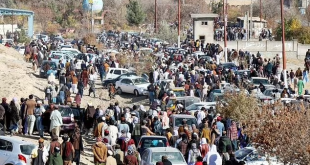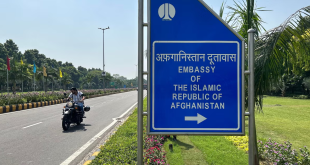AT-KABUL: The number of school girls has fallen 206,000 persons from 1394-1395 solar years (2015-2016), according to a report launched by the Human Rights Watch (HRW), which did not have details about the number in the previous years.
“The number of girls going to schools in Afghanistan is falling now. The number of boys going to school also fallen, but not as much as for girls,” said Heather Barr, researcher of the HRW.
Speaking at a press conference here she said that the girls number is fallen 20 6,000 persons and boys’ 12 2,000 from 1394 to 1395 in 32 provinces.
She said that obviously security is the big issue, but that is not the only reason.
There are 5,300 boys’ schools and 2,500 specifically for girls, so government have more schools for boys than girls, she added.
She said that also 30 percent of schools have no facility of drinkable water, 41 percent of school has no building and 60 percent has no toilet, so these all issues caused to the girls not going to schools.
Seven out of 34 provinces have less than 10 percent female teacher, and in 17 provinces there is less than 20 percent female teachers, she highlighted.
She stated that lack of enough female teacher were other direct reason behind shortage of girls at schools.
She said that one of the problems in girl education is donors.
“Donors are exhausted and tired in Afghanistan and there have been many cuts in funding, particularly in some of the provinces,” she asserted.
She asked the donors “You have to keep funding girl education” in Afghanistan and monitor their money are not to be spent “discriminatory.”
She Recommendations to the government to end any discrimination against girls in the education system and they need to prioritize getting girls into school.
She said that “Our message to them (donors) is you have to keep funding girls’ education in Afghanistan, we encourage them to keep funding at the same level or even higher.”
HRW finding also showed that in some area, where Taliban are dominating, going to school will be allowed for girls till a particular age.
The report also pointing to Daesh affiliates caused closing of schools in eastern part of the country.
Patricia Gossman, senior Afghanistan researcher “Certainly security is the big factor in some parts of the country it declined the children going to school, particularly girls.”
She said that security forces and Taliban “both sides misused schools” by setting up their bases inside the schools and this factor “discouraged” families not to send children to school.
She said that informal schools (known as community based schools run by NGOs) that established in some most insecure provinces.
She said that the community based schools are not governmental schools, but have helped some the “most in need” girls to get education.
“We are very eager to see these program (community based program) continue and sustain, because they reached particularly girls who could not walk to further distances government schools, or whose families did not want them go outside their community,” she added.
It is pertained to mention that HRW has interviewed 249 girls, their parents and local officials in Kabul, Balkh, Nangarhar, and Kandahar. Also numbers of girls have been interviewed from 10 other provinces.
 Afghanistan Times
Afghanistan Times




